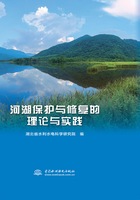
4 Discussion
4.1 Macro-and micro-aggregate stability of the ultisols
After the wetting treatments,the percentage of aggregates>5mm from most soils was the highest and the percentage of aggregates around 2~1mm was the lowest.Zhang and Horn(2001)reported that fragments of 2~1mm or 0.63~0.2mm were the dominant fractions in ultisols in China.Huang et al.(2010)found that wet sieving in the tested ultisols resulted in little difference among the different particle size fractions in terms of percentages.For the aggregates from the microaggregate stability determination,the percentage of 0.05~0.25mm particles from Quaternary red clay was the highest whereas the highest percentage from Shale was found in the fraction of 0.02~0.002mm particles.Peng et al.(2015)indicated that the size of major proportion of ultisols under long-term fertilization was 0.053~0.25mm,followed by the silt-sized fraction(0.002~0.053mm),and the clay-sized fraction(<0.002mm)of less than 7%following water extraction.
The WSA>0.25,MWD,and ADR were the parameters for estimating the macro-aggregate stability;the CDI and ASC were the parameters for estimating the dispersibility of the micro-aggregate.Our results showed that the stability of both macro-and micro-aggregates from Quaternary red clay was stronger than that from the Shale(Fig.2 and Table 4).Yan et al.(2008)indicated that the aggregates from the Shale had the least stability compared with other parent materials.Regardless of the soil parent materials,the water stability of surface cropland soil macro-aggregates was significantly lower than that from other land-use types(Fig.2),possibly due to the long tradition of farming(Zhang et al.,1997).For the micro-aggregate stability,there was no significant trend among land use types.Lu et al.(2014)also indicated that land use type had no obvious influence on the volumes of macro-,meso-,and micro-pores in ultisols.Compared with other land use types,Opara(2009)concluded that the ultisols from Nigeria under natural forest(NF)exhibited significantly a lower clay dispersion ratio(CDR)and higher aggregated silt and clay as well as higher ASC(%)when compared with other land use types,suggesting greater microaggregate stability.Shrestha et al.(2007)showed that forest soils in Nepal had more macro-than micro-aggregates whereas cultivated soils had a greater proportion of micro-than macro-aggregates.
4.2 Influence of related soil properties in the macro-and micro-aggregate stability of the soils
In tropical and subtropical soils,the SOM and sesquioxides arewidely regarded as the main organic and inorganic binding agents of soil aggregation;their roles in soil aggregation have been investigated intensively(Denef et al.,2002;Six et al.,2004;Bronick and Lal,2005;Kögel-Knabner et al.,2008;Pronk et al.,2012;Martins et al.,2013).However,it is difficult to assess their contributions to aggregation of the soil.In the oxide-rich soil,Fe and Al oxidesmay act as binding agents when organic materials are involved in adsorption on oxide surfaces(Imhoff et al.,2002;Six et al.,2002).Six et al.(2004)reported that oxides can act as binding agents in three ways:organo-mineral complexes,electrostatic binding between positively charged oxides and negatively charged clay minerals,and a coat of oxides on the surface of minerals.Our results revealed that certain forms of sesquioxides might be responsible for macro-and micro-aggregate stability of the soils.Ald,Alo,and Fed were very important aggregating agents(Table 7).Soil oxides acted as important binding agents in aggregation in ultisols from subtropical China(Zhang and Horn,2001).Mbagwu and Schwertmann(2006)insisted that Al oxides were better aggregating agents than Fe oxides in some tropical soils.In our study,Ald demonstrated prominent ability in aggregation of macro-aggregates.Li et al.(2005)implied that the stability parameters had significant relationships to Fed and Ald due to the relatively high content of these oxides in these soils.The results by Pinheiro-Dick and Schwertmann(1996)revealed that the oxalate-extractable forms of Fe oxide might be key components for aggregation in some tropical Oxisols and Inceptisols,and Duiker et al.(2003)showed that despite little effect of Fed content on soil aggregation,Feo and organic carbon contents were well correlated with WSA and MWD.However,in our study,the contribution of the Feo to macro-and micro-aggregate stability was among the weakest,determined by the VIP values and regression coefficients(Table 7).We postulate that the Fe and Al alone may not play crucial roles in soil aggregation;however,in association with SOM or clay,they may be indispensable components in soil aggregation.
Table 7 VIP values and regression coefficients for macro-and micro-aggregate stability models

Although the importance and contribution of SOM to aggregate formation and stability has been well reported(Six et al.,2004;Onweremadu et al.,2007;Wagner et al.,2007;Huang et al.,2010),it was not superior in binding the macro-and micro-aggregates in this study(VIP<1).Mbagwu and Schwertmann(2006)and Igwe et al.(2009)stated that organic matter in some of their soils acted as disaggregating agents or was not correlated with aggregate stability,but Plante and McGill(2002)observed that macro-and micro-aggregation could be improved by increased SOM content.Peng et al.(2015)concluded that the Fe/Al oxides seemed to be major agents of<0.25mm aggregates in the ultisolswhereas the SOM played a primary role in stabilizing larger aggregates(0.25~2.00mm).Although Fe/Al oxides were the predominant binding agents in ultisols,the role of SOM in aggregation can be improved by increasing C input(Peng et al.,2015).Igwe et al.(1995)showed that the role of SOM as an aggregating agent in soils may significantly depend on the quantity of organic matter in the soil and the type of soils.In our study,soil organic matter content was mostly less than 20g·kg-1 except in Prunus×cistena upland from Quaternary red clay(Table 2).
Clay can act as a cementing material that holds particles together in the aggregate(Boix-Fayos et al.,2001).Lado et al.(2004)showed that aggregate stability increased with an increase in clay content in the range between 9%and 63%clay,and the increase in aggregate stability was due to the cementing effect of the clay.In our tested soils,the range of the clay content was 24%to 54%,and the results confirmed that clay was an important aggregating agent,especially for microaggregate stability(Table 7).Sumner(1992)found that a large total surface area of Fe and Al oxides might facilitate reactionswith clay particles through Coulombic interactions.Wuddivira and Camps-Roach(2007)suggested that the structural stability of soils dominated by kaolinitic clays increased with increasing clay content,but the soils dominated by smectitic clays succumbed easily to slaking forces under fast wetting when clay content increased.
Ultisols are known for their high content of 1∶1 clay minerals(e.g.kaolinite)and oxides(Lu et al.,2014);Zhou et al.(2013)indicated that electrostatic interactions between oxides and 1∶1 clay minerals can lead to aggregate formation through mineral-mineral bonding.Iron oxides,rather than SOM,have been reported to be the dominant cementing agents for aggregation in ultisols(Lu et al.,2014).Our results indicated that clay,Fed,Ald,and Alo were effective in binding aggregates and contributed significantly to macro-and micro-aggregate stability.